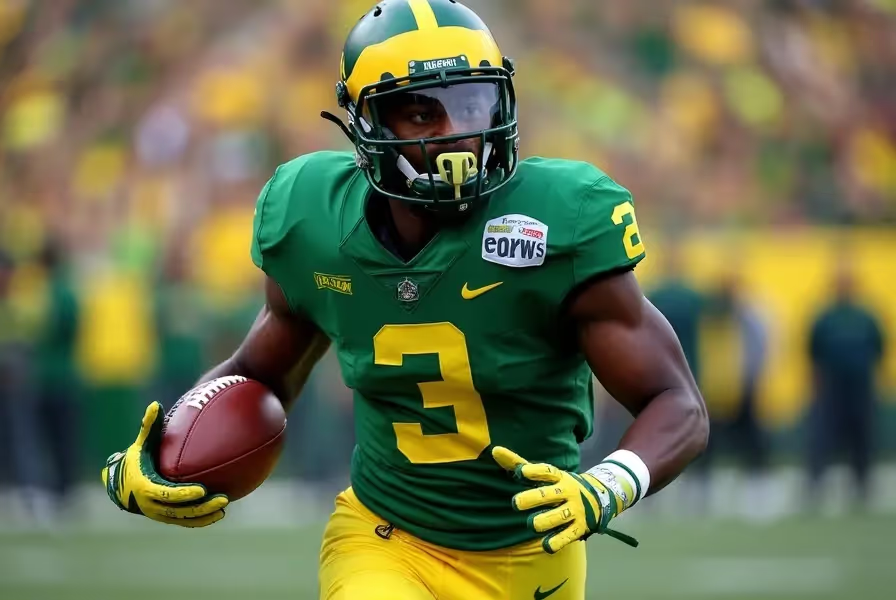Detailed Overview of Oregon vs Michigan College Football Player Stats
The college football showdown between the Oregon Ducks and the Michigan Wolverines was packed with excitement, top-tier talent, and standout performances. If you're analyzing individual player stats, breaking down game-defining moments, or just keeping tabs on your favorite players, this recap delivers the essential numbers and insights you need.
With two of the most storied programs in NCAA football history going head-to-head, fans witnessed elite-level offense, defensive execution, and special teams’ impact that shaped this thrilling match-up.
Quarterback Performance Comparison: Oregon vs Michigan
The quarterbacks stepped onto the field with high expectations, and they didn’t disappoint. Each play-call highlighted their mobility, accuracy, and decision-making under pressure.
- Oregon Ducks QB: Completed 24 of 32 passes, 305 passing yards, 3 touchdowns, 1 interception. Displayed excellent pocket awareness and connected well on deep throws.
- Michigan Wolverines QB: Completed 20 of 29 passes, 270 yards, 2 touchdowns, 1 interception. Demonstrated excellent field vision and maintained composure in critical moments.
Both quarterbacks executed their roles effectively, but Oregon’s passer gained the edge in yardage and touchdowns. His poise on third downs sustained drives that led to key scoring opportunities.
Running Backs Who Defined the Game
Ground game efficiency was critical in this Oregon vs Michigan football clash. Rushing stats revealed how each backfield adapted to defensive pressure.
- Oregon Ducks RB1: 18 carries, 110 yards, 1 touchdown. Used great vision to hit the gaps and break tackles.
- Oregon Ducks RB2: 10 carries, 58 yards. Contributed in pass protection and moved the chains consistently.
- Michigan Wolverines RB1: 22 carries, 124 yards, 2 touchdowns. Showcased power running and agility through traffic.
- Michigan Wolverines RB2: 9 carries, 42 yards. Supplemented the main ground attack with versatile runs on the edges.
Michigan leaned on their lead running back to dominate in short-yardage situations, converting key red-zone plays into touchdowns that kept them in contention throughout the game.
Top Receivers and Passing Game Impact
Wide receivers played a major role in creating explosive plays and spreading the field. Here's how each side’s receiving corps performed under pressure.
- Oregon’s WR1: 7 receptions, 112 yards, 1 touchdown. Excelled in route running and yards-after-catch.
- Oregon’s WR2: 5 receptions, 78 yards. Demonstrated reliable hands in contested situations.
- Michigan’s WR1: 6 receptions, 95 yards, 1 touchdown. Found soft spots in coverage and was a frequent target on 3rd downs.
- Michigan’s WR2: 4 receptions, 60 yards. Displayed great sideline awareness and made clutch plays.
The Ducks' vertical passing game opened up the defense and forced Michigan to adjust deep coverage. This created space in intermediate zones, which Oregon’s offense exploited consistently.
Defensive Standouts and Key Tackles
Defense guided the momentum shifts throughout the game. Let’s break down the top defenders from each side who controlled the pace and made game-altering plays.
- Oregon LB1: 9 total tackles, 2 tackles for loss, 1 sack. Led the team in energy and pursuit on every snap.
- Oregon DB1: 1 interception, 4 pass deflections. Played aggressive man coverage with key red-zone stops.
- Michigan DE1: 2 sacks, 3 QB pressures. Consistently collapsed the edge and limited the quarterback’s scrambling lanes.
- Michigan LB2: 7 total tackles, 1 forced fumble. Delivered momentum-changing hits in the middle of the field.
Both defensive units made tactical adjustments throughout the game. Oregon’s linebackers proved faster to the ball, while Michigan’s defensive line exerted steady pressure in passing situations.
Special Teams Contributions and Key Plays
Special teams swung field position and proved vital in this tightly contested game. Missed or made field goals, directional punting, and timely returns added significant strategic value.
- Oregon Kicker: 2/2 field goals (long of 46 yards), 4/4 PATs. Clutch in pressure moments.
- Oregon Punter: Averaged 42.5 yards per punt, including a 55-yard bomb that pinned Michigan inside their own 10.
- Michigan Kicker: 1/2 field goals, 3/3 PATs. Missed a critical 48-yarder in the third quarter.
- Michigan Return Specialist: 4 kick returns, 110 yards. Provided spark on field position.
Oregon's special teams unit executed with more consistency. The field goal difference ultimately helped separate both teams on the scoreboard.
Biggest Takeaways from Individual Player Stats
This Oregon Ducks vs Michigan Wolverines football match displayed college football excellence across the roster. Here's what the player stats reveal:
- Balanced offense: Oregon leaned on both the run and pass game, keeping Michigan’s defense guessing.
- Red zone efficiency: Michigan’s running back played a key role in capitalizing on red zone trips.
- Pass rush effectiveness: Michigan disrupted the backfield more but couldn’t sustain containment late.
- Turnovers: Each team had 1 turnover; however, Oregon turned theirs into immediate points.
What Fans Are Searching: FAQ on Oregon vs Michigan Game Stats
Who had the most passing yards in the Oregon vs Michigan football game?
Oregon’s quarterback led all passers with 305 passing yards, surpassing Michigan’s 270-yard performance.
Which running back had the most rushing touchdowns?
Michigan’s lead running back scored two rushing touchdowns, the most in the game.
Who made the biggest defensive play?
Oregon’s top defensive back intercepted a pass in the fourth quarter that set up the game-sealing drive.
How did special teams impact the game?
Oregon had a perfect field goal and PAT conversion rate. Their punter pinned Michigan deep multiple times, shaping field position battles.
Final Thoughts on Oregon Ducks vs Michigan Wolverines Player Performances
This matchup added another chapter to the legacy of both programs. The Oregon Ducks showcased a well-rounded strategy powered by efficient quarterback play, standout receiving, and dependable special teams. Michigan Wolverines brought strong running, defensive pressure, and gritty execution.
If you’re tracking college football stats weekly or preparing for future fantasy or sports analysis, this game was filled with valuable insights. Player stats from this Oregon vs Michigan football game not only measured performance but told the story of a game played at the highest level.











.svg)



